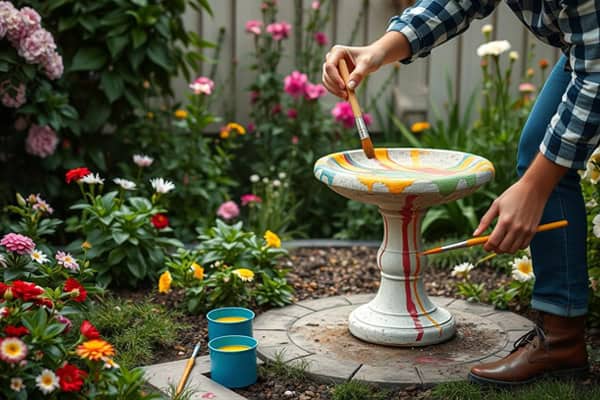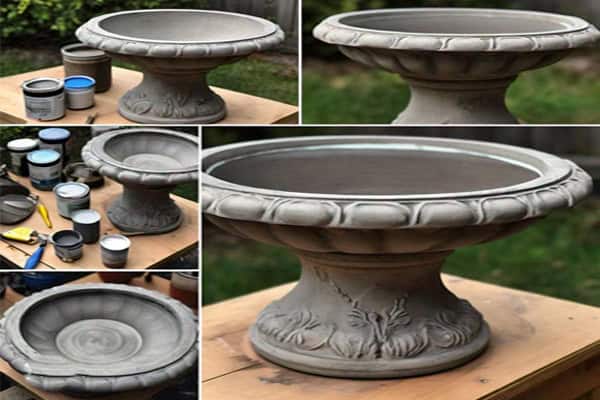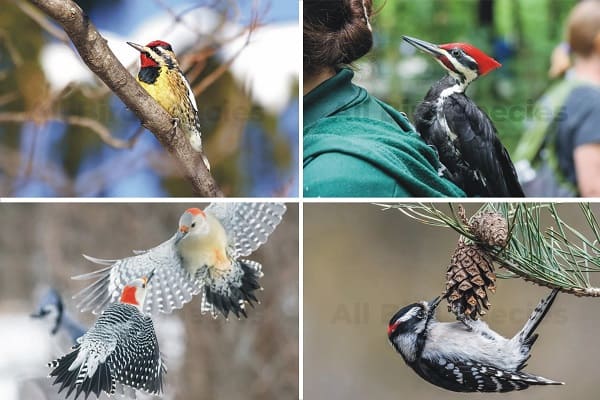Painting a Concrete Bird Bath: Easy DIY Guide
Paint a Concrete Bird Bath to attract more birds and beautify your garden. Birdwatching is a favorite pastime for many, and a DIY bird bath adds charm. I’ll guide you through choosing the right materials and methods. Whether it’s a new project or a refresh, you’ll make it shine. Plus, I’ll share tips on keeping it clean and safe. Let’s make your garden a bird’s paradise!
Understanding the Basics of Concrete Bird Baths
Many of us might ask, what is a concrete birdbath? It’s a simple yet effective way to help our feathered friends. Made from strong concrete, these baths come in many designs. They add beauty to our gardens and give birds a place to drink and bathe.
What is a Concrete Bird Bath?
A concrete bird bath is a water feature made from concrete mix. It’s built to last and can handle the outdoors. These baths have shallow basins, making it safe for birds to drink and bathe. This creates a friendly spot for wildlife.
Benefits of Having a Bird Bath in Your Garden
Bird baths do more than look good. They help our gardens and attract wildlife. Here are some main benefits:
- Attracts many birds, making our garden more lively.
- Offers birds a place to drink and clean, which is vital for them.
- Makes our outdoor space more beautiful for us and our visitors.
- Allows us to relax by watching birds in their natural setting.
Adding a concrete bird bath does more than make our gardens look nice. It helps our local ecosystems and lets us enjoy nature up close. By knowing about concrete bird baths and their benefits, we can make a great place for birds in our yards.
Choosing the Right Materials for the Job
When paint a concrete bird bath, picking the right materials is key. We need to choose paints that look great and last long. The paint we pick is crucial for the project’s success.
Types of Paint Suitable for Concrete
For outdoor projects like a bird bath, we must use outdoor paint. Oil-based masonry paint is a top choice because it sticks well to concrete. It also resists chipping and fading and stays waterproof, which is important for rain and moisture.
Here are some paints that work well for our concrete bird bath:
- Oil-Based Masonry Paint
- Acrylic Exterior Paint
- Epoxy Paint
Importance of Primer and Sealers
Using a concrete primer is vital for great results. It helps the paint stick better, preventing it from flaking or peeling. Primer makes sure the paint layers stick well, making the finish last longer.
After painting, applying sealers keeps the surface safe from weather and water damage. Sealers act as a barrier, keeping our painted bird bath looking good and lasting longer.
Related Video:
How To Paint A Concrete Bird Bath?
Painting a bird bath yourself is a fun project that makes our outdoor space look better. It also gives birds a lovely place to visit. By following a few simple steps, we can make our bird bath look amazing.
Step 1: Clean the Bird Bath Thoroughly
Before we start painting, we need to clean the concrete well. Use soapy water and a stiff brush to remove dirt, algae, and any other residue. This makes sure the paint sticks well.

Step 2: Apply Concrete Sealer
After cleaning, we should put a concrete sealer on the bird bath. This step helps the paint last longer by keeping moisture out. Choosing a good sealer is key for our project.
Step 3: Use Primer for Better Adhesion
Primer is crucial when painting a bird bath. It helps the paint stick to the concrete better. Once the sealer is dry, apply primer with a brush or spray for even coverage.
Step 4: Paint with Weather-Resistant Colors
Next, pick a piece of paint that can handle the weather. Use acrylic or latex paint made for the outside. Apply a few coats with a brush or roller for colors that last.
Step 5: Finish with a Protective Sealant
To keep our painted bird bath looking great, finish with a protective sealant. This adds an extra layer against fading and peeling. After applying, let it dry before putting the bird bath back outside.
| Step | Action | Purpose |
|---|---|---|
| 1 | Clean the Bird Bath | Remove dirt and residues |
| 2 | Apply Concrete Sealer | Enhance durability |
| 3 | Use Primer | Improve paint adhesion |
| 4 | Paint with Weather-Resistant Colors | Ensure longevity of the paint job |
| 5 | Finish with a Protective Sealant | Protect against fading and peeling |
Tips for a Successful Painting Experience
Painting our concrete bird bath requires careful timing and placement. By following some key tips, we can make sure the paint sticks well and our garden looks better. Let’s look at the best times to paint and where to put the bird bath.
Timing and Weather Considerations
Choosing the right time to paint is very important. We should paint on warm, dry days so the paint dries fast. It’s best to avoid painting when it’s too humid or rainy, as this can make the paint not stick well or dry slowly. Here are some things to remember:
- Check the weather forecast to ensure no rain is expected within 24 hours of painting.
- Optimal temperatures for painting range between 50°F and 85°F.
- Avoid painting in direct sunlight, which can cause paint to dry too quickly and crack.
Choosing the Right Location for Your Bird Bath
Where we put our bird bath is key to attracting birds. It should be safe and easy to see, away from predators. Here are some tips for the best bird bath placement:
- Place the bird bath near trees or shrubs to provide shelter for visiting birds.
- Ensure the bath is easily accessible for regular cleaning and maintenance.
- Position it in an open area to make it visible to birds and to enjoy its beauty from different angles.
By thinking about these factors, we can create a beautifully painted bird bath. It will not only make our garden look great but also be a lovely spot for local wildlife.
Check Our Previous Articles:
Final Thoughts
As we finish our guide on painting a concrete bird bath, it’s clear that it’s a win-win. A well-painted bird bath makes our outdoor space look better and helps local wildlife. By preparing and painting it right, we make sure it lasts longer.
Putting in the effort upfront makes bird bath upkeep easier. A clean and painted bird bath draws in birds and shows we care about our outdoor areas. These projects bring us joy as we see our gardens change and enjoy nature more.







